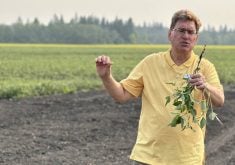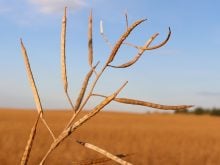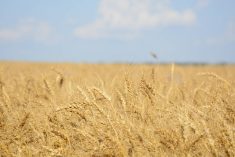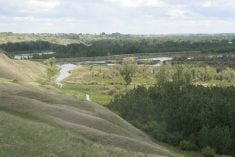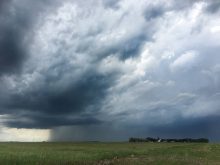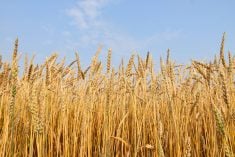Scientists hoped a new NASA satellite would provide cutting-edge tech for soil moisture sampling — until something went wrong
A $1.1 billion NASA satellite that was supposed to revolutionize soil moisture mapping around the world has suffered a serious but not insurmountable setback.
The American space agency launched its Soil Moisture Active Passive (SMAP) satellite Jan. 31, 2015. It was an upgrade over the European Space Agency’s Soil Moisture and Ocean Salinity (SMOS) satellite because SMAP is equipped with both passive and active radar sensors.
The SMOS satellite has a passive sensor that records how much energy the Earth is emitting. It provides accurate soil moisture measurements but at a low resolution, taking one reading every 40 kilo-metres.
Read Also

Defence investments could benefit agriculture
A bump in Canada’s NATO spending commitments could lead to infrastructure investments that would benefit rural areas
The SMAP satellite is also equipped with an active sensor that sends energy to Earth and records what bounces back. It delivers high resolution images, taking one reading every one km.
The active sensor was the real innovation in the SMAP satellite, but it failed six months after the satellite was launched.
“Even an organization like NASA has setbacks,” said Heather McNairn, a research scientist with Agriculture Canada who is part of a large team of U.S. and Canadian researchers working on the project.
“They lost communication with it, is what basically happened. So it just sort of went to sleep. They poked at it a bit, but they weren’t able to revive it.”
Paul Bullock, a soil science professor at the University of Manitoba, said the SMAP satellite was going to provide a wealth of information to the neglected field of soil science.
“Soil science is not a sexy subject. It’s mud,” he said.
However, he believes it should be a sexy subject, at least in agricultural circles, because soil moisture has a significant impact on crop yield, quality, diseases and flooding.
There are weather stations all over Western Canada, and Agriculture Canada regularly produces up-to-date precipitation and temperature maps.
However, there is precious little information on soil moisture.
“The truth is we don’t measure it,” said Bullock.
That is why he was so excited about the potential of SMAP, which was supposed to provide higher resolution images than SMOS. Another useful feature is that it collects data every one to three days compared to one to two weeks for most satellites.
“What I get passionate about is that even though this is just looking at that very surface skin of soil moisture, that is the most dynamic layer for changes in moisture in the soil,” he said.
Bullock said soil moisture is extremely variable. It can change dramatically in a short distance and over a short period of time because of soil type, vegetation, temperature and rainfall.
“The variability is mind-numbing.”
That is why it is important to produce high resolution images based on readings from smaller areas.
McNairn said the SMAP data was going to be used for flood, crop disease and weather forecasting.
The 40 km resolution data will still be useful for weather forecasting.
“Soil moisture is one of the variables in weather forecasting that is the least understood but has a pretty significant effect on weather forecasting and modeling,” she said.
However, 40 km is too big an area to provide much value for flood forecasting or for identifying what crop production areas would be at high risk for developing water-dependent diseases such as root rot and sclerotinia.
“It’s not the end of the story though, so don’t despair,” said McNairn.
Researchers from NASA, the U.S. Department of Agriculture, Agriculture Canada, Environment Canada and universities on both sides of the border are trying to figure out a way to downscale the 40 km pixels into pixels of one km resolution.
“We’re hoping that at the end of it we can come up with a method that’s going to work so that NASA can kind of get back on track,” she said.
Some strategies have already been devised.
McNairn said researchers in Manitoba will be validating the 40 km resolution data next year as well as determine how they stack up with actual, on-the-ground soil moisture measurements.
“I’m pretty confident some solution is going to be found,” she said.
Bullock said surface moisture is just one piece of the puzzle. It needs to be augmented by manual soil moisture measurements taken deeper in the ground.
“We have to pull that information together with the satellite information to build a complete picture of what the moisture content of the soil is,” said Bullock.
“In agriculture, we need to know what’s going on in the entire root zone.”
He agreed with McNairn that all is not lost, but there is no doubt that losing the active sensor was a serious setback.
“The strength of having it on one (satellite) was that you’re acquiring the information both from the active and the passive over the same piece of land at the same time,” he said.
NASA had planned to release the first verified soil moisture data maps by May. It’s still possible the agency will be able to produce the products it was hoping to create by working with data from another satellite equipped with an active sensor, but there will likely be a lengthy delay.
“It has probably set it back a year,” said Bullock.




